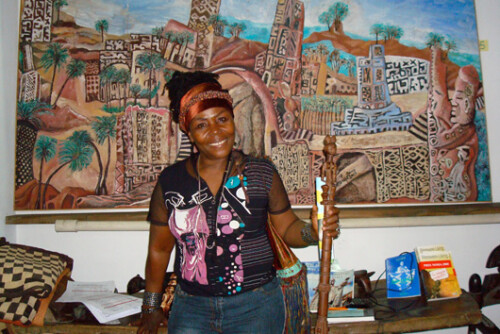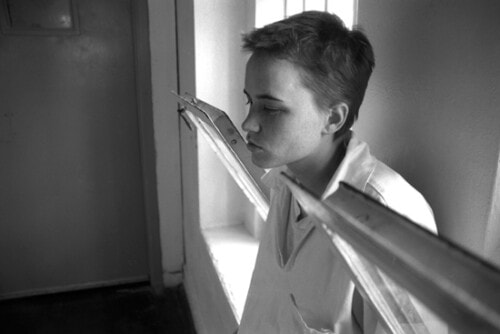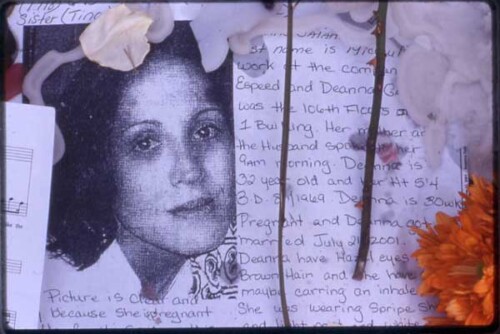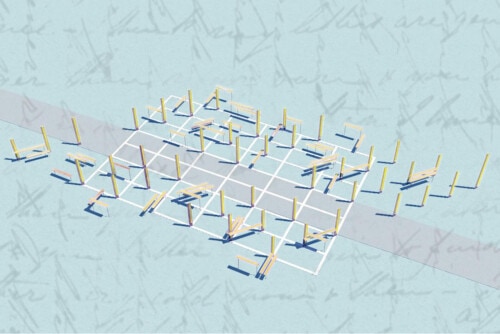On December 24, 1822, a slave woman in an outlying district of the Cape Colony (of what would become South Africa) cut the throat of her nine-year-old son. She had, court records later reported, planned to take her own life. Instead, she buried her son in a shallow grave and left the farm on which she was enslaved to walk to another, where she gave herself up to the district’s Field Cornet, or local militia officer. Of her life, we know almost nothing. In the archive, she survives only in the fragmented records and palpable silences of criminal proceedings, recognized under various related names, including, most frequently, Sila van de Kaap. To the extent that she remains visible to us now, it is as a shadow figure and a repudiation of colonialism’s will-to-power in knowledge. Even so, it appears that Sila van de Kaap’s story is one not only of thwarted hope, bitter disappointment, and stubborn presence but also of a desire for speech resulting from the inability to be heard fully from within slavery’s discourse.1
In this highly condensed summary of the act that brought Sila out of the anonymity of historical silence, two orders of statement are immediately evident. There are statements of fact: the “where,” “when,” and “who” of her act. There is, too, a statement about intentionality—not only that she willfully killed her child but that she intended to kill herself. These statements appear in the Field Cornet’s evidence at her trial and, subsequently, in her appeal against her death sentence. The statements of fact increasingly overtake all other inquiries into her fate—who owned her, was she really free? Although undertaken by the British colonial authorities at the moment in which slavery has come into increasingly moral and legal question, an investigation into the background of Sila’s act ultimately abandoned any effort to explain it in terms of the “mitigating circumstances” constituted by slavery. Tracing Sila’s story and seeking the echoes of her own words, which I attempt to do in this paper, leads one to conclude with a certain melancholy that Sila appears neither within slavery nor the legal system that authorized it. As an archival figure, she responds only to questions and only in the terms and categories posed by those who anticipated their own future recall in the archive. She occupies that position so well described by Gayatri Chakravorty Spivak in “Can the Subaltern Speak?” According to Spivak’s theory, Sila is structurally muted in that, although we have words from her, the state never granted her full subjectivity, and her utterances remained, for them, utterly illegible.2
Archeology of the Cape Archive
As Derrida observes, there can be “no political power without control of the archive, if not memory.”3 The fragmented narrative of events leading to and following this slave woman’s murderous gesture comes from a range of documents held at the Cape Town Archive. Before pursuing her story, it is necessary to say something about how Sila’s life emerges through these documents. The archive houses the records of colonial bureaucracy and is, today, predicated upon the idea that such records are testaments of a national past—conceived in anticipation of the future. Within such a temporally ambivalent space, the assumptions and conventions that structure the archive are discernible not only as organizational principles but also as discursive effects. However, these effects appear as truth or fact. Their visibility today must be understood as that which was guaranteed by the particular structures ordering the archive. Categorized, classified, and made accessible through alphabetical and numerical coding, as well as chronological sequencing and governmental function, documents reflect the structures of both colonial and, now, national bureaucracy within South Africa’s official archive.4
At present, these archives fall under the jurisdiction of the National Archives and Records Service of South Africa, constituted by an amendment to an older, apartheid-era act that oversaw the maintenance of and access to materials in the national archival network. The National Archives and Records Service of South Africa Act (Act 43 of 1996 as amended), or NARS, has a stated mission “to foster national identity and to ensure the protection of rights” in the wake of Apartheid (Annual Report of the National Archivist 6). As such, the national archive system is informed by an implicit and uneasy memory of the apartheid regime’s disregard for public accountability. In its aim to preserve a national heritage of public and non-public records “with enduring value of national significance,” the Act makes direct reference to the “neglected archives” and repositories of the past (NARS 2).
Within its relatively newly constituted role, the South African archive system is tied to the government’s laborious distancing of itself from the opacity of the apartheid regime’s modus operandi. The promise of transparency is apparent in a statement made on the National Archives’ Web site, which says that the “foundation of good governance” is linked with ensuring “a better quality archival legacy.”5 Rhetoric notwithstanding, total transparency is ultimately foreign to government, which always arrogates the prerogative of secrecy. NARS actually stipulates that provisions be made to control the disclosure of “sensitive” materials. These unspecified materials are subject to other, equally unspecified legislative acts or the consent of relevant governmental departments (NARS 8). In this context, the National Archivist is charged with an educational responsibility to expand accessibility to the less privileged (NARS 3 and 4), while also monitoring the public’s capacity to know and to bear the burden of knowledge (especially of government secrets).
The historical record is treated, in this instance, as “information” (NARS 3), but this information is not merely evidence of presences; it is also evidence of absence and, more importantly, of exclusion. Thus, current policy stipulates that the archival system is to make these documents available to “members of the public who may wish to use them for purposes of research of past events or to document or vindicate their rights,” (NARS, emphasis added). Clearly, then, the archive is thought to contain information about the violation of rights or the withholding of recognition for rights, which are now presumed inherent and universal.
If something of the anxiety about the national archival relationship with colonialism and apartheid can be heard in the operational directives of the post-apartheid government, the legacy of colonial and apartheid classificatory biases has also been tempered by the integration of previously excluded materials. Among these is the vast collection of documents whose existence or revelation was feared by apartheid’s apologists for its capacity to generate future condemnation, and possibly destruction: namely, the documents of anti-apartheid activity. Now housed at the University of the Western Cape’s Mayibuye Center are materials previously excluded from apartheid’s archival network precisely because they embodied a limit to the power/knowledge system of apartheid and the organization and classification of national history. Over 100,000 photographs, reams of film and video, oral histories, posters and other documents in this collection date to the apartheid era (between 1948 and 1994). Many of the documents include records of apartheid abuses. Others record the existence and fate of those people annihilated by it. The holdings of the Mayibuye Center have been assigned a truth value, which derives from their capacity to bear witness to the fallacious basis of a political system that claimed both rationality and truth for itself.6
Having been in exile, so to speak, these materials were literally and figuratively “brought home,” perhaps already performing what Derrida would, in another context, refer to as the archiving impulse’s creation of a home in response to exile. In fact, the Xhosa word Mayibuye translates as come home or let him/her return. Prior to that repatriation, a single place, or as Derrida coins it, a jussive (structure) or arkheion (housing), did not exist for these documentary traces of apartheid, except in the minds of the anti-apartheid activists, who ironically shared with the colonizers their anticipation of a future “place”—in both history and in the representation of the nation.7
- Slavery began at the Cape Colony in May 1652, shortly after the arrival of the first Dutch East India Company commander, Jan van Riebeek; it ended with the British Emancipation Decree of 1833, which was, however, brought into effect in 1834 (with a four-year apprentice period that meant the former slaves were “truly” free after 1838). The British Abolition of Slave Trade Act of 1807 also applied to the Cape Colony since this fell within the period of the first British occupation of the colony. This did not mean, however, that the trade actually ended. The colonial archive contains many memoranda between the colony and Colonial Office in London detailing this fact. [↩]
- Gayatri Spivak, The Critique of Postcolonial Reason: Toward a History of the Vanishing Present (Cambridge, Mass.: Harvard University Press, 1999). I cite Spivak here with the caution that comes from not wanting to collapse differences between the “situatedness” of her archival work and my own. Spivak, here, is revisiting her essays “Can the Subaltern Speak” and “The Rani of Samur,” in which she considers the hegemony of the colonial archive and its relationship to nineteenth-century European historiography in the act of “creating” and using the Rani as a political foil for British colonial ends. See “The Rani of Samur” in Europe and Its Others: Proceedings of the Essex Conference on the Sociology of Literature vol. 1. Francis Barker et al (Eds.), (Colchester: University of Essex Press, 1985): 128-151. “Can the Subaltern Speak?” originally appeared in Marxism and the Interpretation of Culture. Cary Nelson and Lawrence Grossberg (Eds.) (Chicago: University of Illinois, 1988): 271-313. [↩]
- See Jacques Derrida, Archive Fever: A Freudian Impression, trans. Eric Prenowitz (Chicago: University of Chicago Press, 1996 [first French publication, 1995]): 4. [↩]
- In its current form, the Cape Town Archive is one of ten major repositories in the national system. With over 30,500 linear meters of occupied shelf storage, it is second in size to the National Archives in Pretoria. See the Annual Report of the National Archivist and State Herald, 1999-2000 (Pretoria: National Archivist, 2000): 17. [↩]
- See “Mission.” The National Archives and Records Service. www.national.archives.gov.za. [↩]
- Most of these materials had been sent outside of South Africa during the apartheid years, for safe keeping at such places as the International Defense and Aid Fund in London. After bans against the African National Congress and other anti-apartheid organizations were lifted in 1990, the IDAF’s collection was returned to the Mayibuye Center for History and Culture in South Africa. In September of 1996, shortly after the Truth and Reconciliation Commission hearings began, the collection was the subject of intense negotiation. At the end of these negotiations, the newly democratically elected ANC government established the Robben Island Museum, which gained control of the Mayibuye Center. Although still housed at the University of Western Cape, it now operates under the title of The University of Western Cape-Robben Island Mayibuye Center. [↩]
- See Derrida’s comments upon the relation between his work in Archive Fever and his invited response to the South African Truth and Reconciliation Commission, in “Archive Fever: A Seminar by Jacques Derrida,” in Refiguring the Archive, Eds. Carolyn Hamilton, Verne Harris and Graeme Read, Jane Taylor, Michele Pickover, Graeme Reid and Razia Saleh. (Cape Town: David Philip, 2002): 38-80. See especially p. 1, p. 2. [↩]




